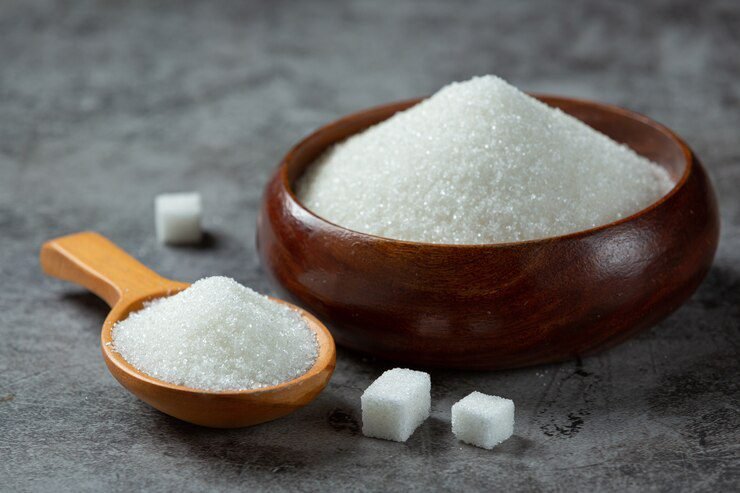Physical Address
304 North Cardinal St.
Dorchester Center, MA 02124
Physical Address
304 North Cardinal St.
Dorchester Center, MA 02124

Decode food labels to identify sneaky names for sugar and maintain a healthier diet.

Fructose and maltodextrin are two commonly used sweeteners in processed foods and beverages. Fructose, also known as fruit sugar, is a naturally occurring sugar found in fruits, honey, and some vegetables. It is known for its intense sweetness, making it a popular choice for sweetening a variety of food products.
However, excessive consumption of fructose has been linked to various health issues, including obesity, type 2 diabetes, and fatty liver disease. This is because fructose is metabolized differently in the body compared to other sugars. Unlike glucose, which is processed by all cells in the body, fructose is primarily metabolized in the liver.
On the other hand, maltodextrin is a carbohydrate derived from corn, rice, potato starch, or wheat. It is commonly used in processed foods as a thickener, filler, or sweetener. Maltodextrin is easily digestible and quickly converted into glucose, providing a rapid source of energy. However, its high glycemic index may cause blood sugar spikes, making it unsuitable for individuals with diabetes or those watching their blood sugar levels.
While both fructose and maltodextrin are widely used in the food industry, it is important to consume them in moderation as part of a balanced diet. Being aware of the potential health implications and understanding how these sweeteners are metabolized in the body can help individuals make informed choices about their dietary intake.
This table includes credible sources for decoding food labels:
| Element | Description | Credible Source |
|---|---|---|
| Serving Size | Consider the serving size to understand the nutritional content accurately. | FDA |
| Calories | Check the calories per serving and adjust portion sizes accordingly. | CDC |
| Macronutrients | Examine protein, carbohydrates, and fats per serving for balanced ratios. | Academy of Nutrition and Dietetics |
| Added Sugars | Identify the amount of added sugars to limit intake for better health. | FDA – Added Sugars |
| Fiber | Choose foods higher in fiber for improved digestion and fullness. | CDC – Dietary Fiber |
| Sodium | Monitor sodium levels to prevent health issues related to high intake. | CDC – Sodium |
| Ingredients List | Read the ingredients list to identify hidden sugars and additives. | FDA – Ingredients |
| % Daily Value (DV) | Use %DV to evaluate nutrient levels, aiming for lower %DV of certain components. | FDA – % DV |
| Nutrient Claims | Be cautious of claims like “low-fat” or “reduced-sugar” and verify overall healthiness. | FDA – Nutrient Claims |
| Whole Foods vs. Processed Foods | Prefer whole, minimally processed foods for better overall nutrition. | Harvard T.H. Chan School of Public Health |
Fructose is a natural sugar found in fruits, vegetables, and honey. It is also used as a sweetener in many processed foods and beverages.
Consuming excessive amounts of fructose, especially in the form of added sugars, has been associated with an increased risk of obesity, type 2 diabetes, and heart disease.
Maltodextrin is a common food additive made from starch. It is used as a thickener, filler, or flavor carrier in processed foods and beverages.
While maltodextrin is derived from starch, it is not technically a sugar. However, it is a carbohydrate that can be quickly broken down into glucose by the body.
Both fructose and maltodextrin can affect blood sugar levels. Therefore, individuals with diabetes should monitor their intake of these substances and consult with a healthcare professional for personalized advice.
In some individuals, consuming large amounts of fructose may cause digestive issues such as bloating, gas, or diarrhea. Maltodextrin, on the other hand, can cause a rapid increase in blood sugar levels and may not be suitable for individuals with certain health conditions.
Both fructose and maltodextrin should be consumed in moderation. However, excessive intake of fructose, particularly from added sugars, has been linked to negative health effects. Maltodextrin, while not inherently unhealthy, can have an impact on blood sugar levels, making it important to consume in moderation.
Yes, there are several natural alternatives to fructose and maltodextrin, such as stevia, monk fruit extract, and erythritol. These sweeteners are low in calories and have minimal effects on blood sugar levels.